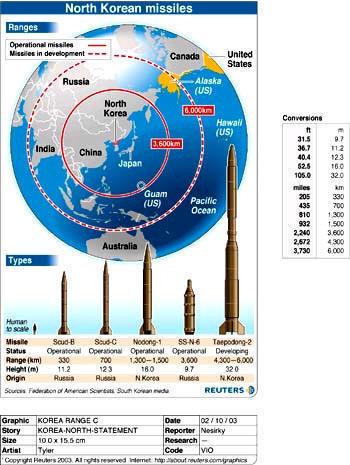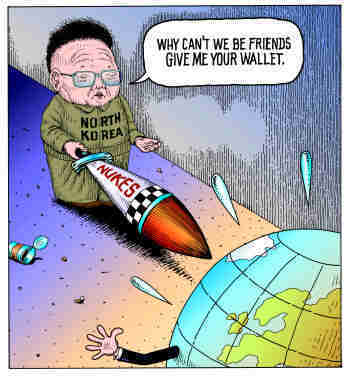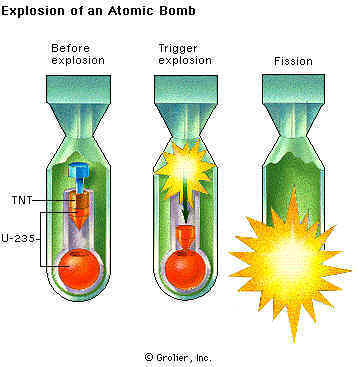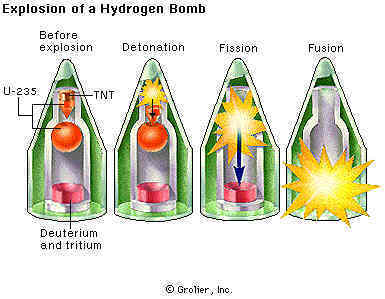The latest from the Environment Society of Australia - click here to see all the news
North Korea pledges to drop nuclear programs at arms talks, to get any aid in return
BEIJING — North Korea agreed
Monday to stop building nuclear weapons and allow international
inspections in exchange for energy aid, economic cooperation and
security assurances, in a first step toward disarmament after two
years of six-nation talks.
The chief U.S. envoy to the talks praised the
breakthrough as a "win-win situation" and "good agreement for
all of us." But he promptly urged Pyongyang to make good its
promises by ending operations at its main nuclear facility at
Yongbyon.
"What is the purpose of operating it at this point?" said U.S.
Assistant Secretary of State Christopher Hill. "The time to turn
it off would be about now."
Despite the deal's potential to help significantly ease friction
between the North and the United States, after years of false
starts and setbacks, Hill remained cautious.
"We have to see what comes in the days and weeks ahead," he said
before leaving for Washington.
The agreement clinched seven days of talks aimed at setting out
general principles for the North's disarmament. Envoys agreed to
return just over a month later, in early November, to begin
hashing out details of how that will be done.
Then, the hard work of ensuring compliance will begin, officials
attending the talks said.
"Agreeing to a common document does not mean that the solution
to our problems has been found," said Japan's chief envoy,
Kenichiro Sasae.
Another Japanese official, who spoke on condition he not be
named in order to discuss the issue more freely, noted that
there was no common understanding among the participants about
the nature of North Korea's nuclear program.
Hill said they didn't foresee inspectors scouring the country to
find the nuclear programs, noting Pyongyang had voluntarily
entered into the agreement.
"We do not plan to go out onto the landscape of (North Korea)
and start hunting for nuclear facilities. We expect those to be
shown to us and we expect to move quickly," he said.
According to a joint statement issued at the talks' conclusion,
the North "committed to abandoning all nuclear weapons and
existing nuclear programs and returning at an early date" to the
Nuclear Nonproliferation Treaty and International Atomic Energy
Agency safeguards.
"The six parties unanimously reaffirmed that the goal of the
six-party talks is the verifiable denuclearization of the Korean
Peninsula in a peaceful manner," the statement said.
Responding to Pyongyang's claims that it needs atomic weapons
for defense, North Korea and the United States pledged to
respect each other's sovereignty and right to peaceful
coexistence, and also to take steps to normalize relations.
"The United States affirmed that it has no nuclear weapons on
the Korean Peninsula and has no intention to attack or invade
(North Korea) with nuclear or conventional weapons," according
to the statement, in assurances echoed by South Korea.
Hill said he would be willing to visit North Korea to keep
channels of communication open amid the ongoing nuclear
discussions. But many factors would be involved in determining
whether such visits are made, he said.
The talks, which began in August 2003, include China, Japan,
Russia, the United States and the two Koreas.
The negotiations had been deadlocked over North Korea's demand
to keep the right to civilian nuclear programs after it disarms,
and the agreement acknowledges the North has "stated" that but
doesn't go further.
North Korea had also demanded that it be given a light-water
nuclear reactor at the latest talks -- a type less easily
diverted for weapons use -- but Washington had said it and other
countries at the talks wouldn't meet that request.
Putting aside the question for now, the statement said: "the
other parties expressed their respect and agreed to discuss at
an appropriate time the subject of the provision of light-water
reactor" to North Korea.
The North will have to build trust by fulfilling all its pledges
before that issue would be discussed, said Sasae, who is
director of the Asia and Oceania Bureau at Japan's Foreign
Ministry.
North Korea has also refused to totally disarm without getting
concessions along the way, while Washington has said it wants to
see the weapons programs totally dismantled before granting
rewards. The statement, however, says the sides agreed to take
steps to implement the agreement "in a phased manner in line
with the principle of 'commitment for commitment, action for
action.'"
The other countries at the talks said they were willing give
energy assistance to the North, including a South Korean plan to
deliver electricity across the heavily armed border dividing the
peninsula.
"This is the most important result since the six-party talks
started more than two years ago," said Chinese Vice Foreign
Minister Wu Dawei, Beijing's envoy.
North Korea was promised two light-water reactors under a 1994
deal with Washington to abandon its nuclear weapons. That
agreement fell apart in late 2002 with the outbreak of the
latest nuclear crisis, when U.S. officials said North Korea
admitted having a secret uranium enrichment program.
The North is believed to have enough radioactive material for
about a half-dozen bombs from its publicly acknowledged
plutonium program, but hasn't performed any known nuclear tests
to prove its capability. In February, the North claimed it had
nuclear weapons.
Japan and North Korea also said in the statement they would move
to normalize relations regarding "the outstanding issues of
concern." The reference appears to allude to Tokyo's concerns
over its citizens that the North has admitted abducting.
Source: Associated Press


Nuclear Weapons

Nuclear weapons are the most powerful weapons in the world. The explosion of a nuclear bomb produces destruction on a scale far vaster than the explosion of a conventional bomb. And nuclear weapons can produce harmful effects that last far longer, and cover a far larger area, than the immediate effects of the explosion itself.
Nuclear weapons have been used in combat only twice, by the United States against Japan at the end of World War II. Along with the United States, Russia, Ukraine, China, France, Britain, India, and Pakistan acknowledge having nuclear weapons. Together these countries have enough weaponry to threaten all of civilization.
The world has never experienced a nuclear war, in which countries attack each other with nuclear weapons. Based on what they know about these weapons, however, scientists think that the results of such a war would be devastating. Thus nuclear weapons have had a deep and troubling effect on the world.
How Nuclear Weapons Work
The power of nuclear weapons comes from nuclear energy--energy released from the nucleus, or center, of an atom. The energy may be released in two ways: through the splitting of the nucleus, or nuclear fission, and through the joining of two nuclei, or nuclear fusion.
Fission Weapons. Fission weapons (also called atomic weapons) make use of nuclear fission to produce an explosion. In these weapons, many nuclei undergo fission so rapidly that, in effect, they split at the same time and release an enormous amount of energy. This is accomplished through a chain reaction.
A chain reaction begins with the fission of a few nuclei. Each nucleus is made up of particles called protons and neutrons. When the nucleus splits, most of these particles go to form lighter nuclei. Several neutrons are also released, along with a great deal of energy. The free neutrons strike other nuclei nearby, causing them to split and release neutrons. These neutrons in turn produce still more fission, and the chain reaction quickly builds.
Only a few materials will support a chain reaction. Fission weapons contain materials such as uranium 235 and plutonium 239. These are fissionable forms of uranium and plutonium--that is, forms that readily undergo fission. The materials used in weapons are produced in special factories.
A chain reaction also requires a certain amount of fissionable material. (Scientists use the term critical mass to describe the amount that is needed.) A fission bomb contains separate pieces of fissionable material, each too small to support a chain reaction. The bomb also contains a conventional explosive. When this explosive is set off, it pushes the pieces of fissionable material together with great force, starting the chain reaction.
Some of the materials used in weapons, especially uranium 235, are also used to produce fission in nuclear reactors. But the material in a reactor is far less concentrated than the material in a bomb. It is also arranged so that the reaction takes place in a slow, controlled way. In a bomb, the entire chain reaction takes place in less than a millionth of a second. Huge amounts of energy are released in an enormous explosion.
Fusion Weapons. Fusion bombs are often called hydrogen bombs because they depend on the fusion of many hydrogen nuclei. Fusion releases even more energy than fission (for the same weight of nuclear material). It is also more difficult to achieve. For fusion to take place, the hydrogen nuclei must be confined and heated to temperatures of millions of degrees. Because of the heat, fusion weapons are also known as thermonuclear weapons.
The conventional explosives that are used to trigger atomic bombs are not powerful enough to set off thermonuclear explosions. Instead, thermonuclear weapons use fission explosions to trigger the fusion.
A thermonuclear weapon depends on materials such as deuterium and tritium, which are forms of hydrogen that will undergo fusion more readily than ordinary hydrogen. The weapon also contains a fission bomb. The fission bomb is set off first, and its explosion produces extremely high temperatures and pressures. These forces make the deuterium and tritium nuclei fuse almost all at once, producing a massive explosion.

Kinds of Nuclear Weapons
People often speak of nuclear weapons in terms of kilotons (thousands of tons) and megatons (millions of tons). These terms refer not to the weight of the weapons but to their strength (or yield) as compared to the strength of a well-known conventional explosive, TNT (trinitrotoluene). A one-kiloton weapon produces an explosion equal to the explosion of 1,000 tons of TNT. The explosion of a one-megaton bomb releases the same amount of energy as a million tons of TNT.
The first nuclear weapons were atomic bombs with forces of about 20 kilotons or less. Today a single missile can carry a thermonuclear warhead with a yield of 25 megatons. And weapons with more than twice that yield have been built. Powerful weapons such as these are strategic nuclear weapons. They are designed to destroy cities, industrial centers, and large military installations. Strategic weapons are made to be dropped from planes or delivered by missiles, some of which can travel halfway around the world.
Tactical nuclear weapons have much shorter ranges and much lower yields. They are mostly battlefield weapons, such as anti-aircraft missiles and artillery shells that are designed for use against enemy troops and tanks. The yield of a battlefield nuclear weapon may be as little as a tenth of a kiloton or as much as several kilotons.
Most nuclear weapons are designed to explode in the air just over a target. (The explosion point is sometimes called point zero, and the target area beneath it is called ground zero.) Space-based nuclear weapons have been proposed, although such weapons have not been built. In one type, a nuclear explosion would be used to trigger an X-ray laser--a powerful, focused beam of X rays. This beam could be used to destroy enemy satellites and missiles over a wide area.
Effects of Nuclear Weapons
The effects of a nuclear explosion are so awesome that they are difficult to imagine. In 1945, a single atomic bomb destroyed most of the city of Hiroshima, Japan, and killed or injured more than half the people. A second bomb caused similar destruction in the Japanese city of Nagasaki. Most of what people know about the effects of nuclear weapons was learned in these explosions and in tests conducted in isolated areas where no people live.
The effects of a nuclear explosion vary with the yield of the weapon. Scientists are still unsure of all the effects, but they know that a powerful nuclear explosion causes destruction in several main ways.
Blast. The enormous release of energy in a nuclear explosion heats the air very quickly. The hot air expands rapidly, creating a shock wave (or blast) that travels out from the site of the explosion. This blast accounts for half the energy released by the explosion. It can flatten buildings near the explosion site and cause damage for miles around. The force of the explosion can also produce a large crater in the ground.
Heat. A nuclear explosion creates a fireball with temperatures of millions of degrees. The temperatures are high enough to instantly destroy almost anything near the site of the explosion. Heat accounts for about a third of the energy released in the explosion. The heat from the fireball can set off raging fires over a wide area. Meanwhile, dust and dirt are sucked into the fireball. Because hot air rises, the dust and dirt rise with the fireball, creating a huge, mushroom-shaped cloud.
Radiation. Along with the blast and heat, large amounts of harmful radiation are released in a nuclear explosion. About half of this radiation is called prompt radiation and is mostly in the form of neutrons and gamma rays (high-energy rays that, like X rays, are very penetrating). The radiation can kill people and animals near the site of the explosion. Even several miles away, people can become sick from exposure to radiation. And radiation can produce diseases such as cancer that take years to develop.
The delayed radiation effects of a nuclear explosion can be widespread and long-lasting. The explosion produces vast quantities of tiny particles that are radioactive--that is, they continue to give off radiation. These particles coat everything within range of the explosion. They also coat the dust and dirt that are drawn into the mushroom-shaped cloud. In this way the particles enter the atmosphere, where they may be carried for many miles.
Eventually the particles fall back to earth as radioactive fallout. The fallout from a nuclear explosion could harm people hundreds of miles away from the explosion site. It could contaminate soil, water, and food supplies over large areas. And the particles would remain radioactive for a very long time, even centuries.
The radiation produced by a nuclear weapon can vary with the design of the weapon. For example, some thermonuclear weapons are considered "cleaner" than others because they produce less radioactive fallout. A type of weapon called a neutron bomb (or enhanced radiation weapon) releases less of its energy as blast and more in the form of neutron radiation. Thus a neutron bomb does less damage to buildings and to tanks and other military equipment. But its effects on people and other living things are deadly.


